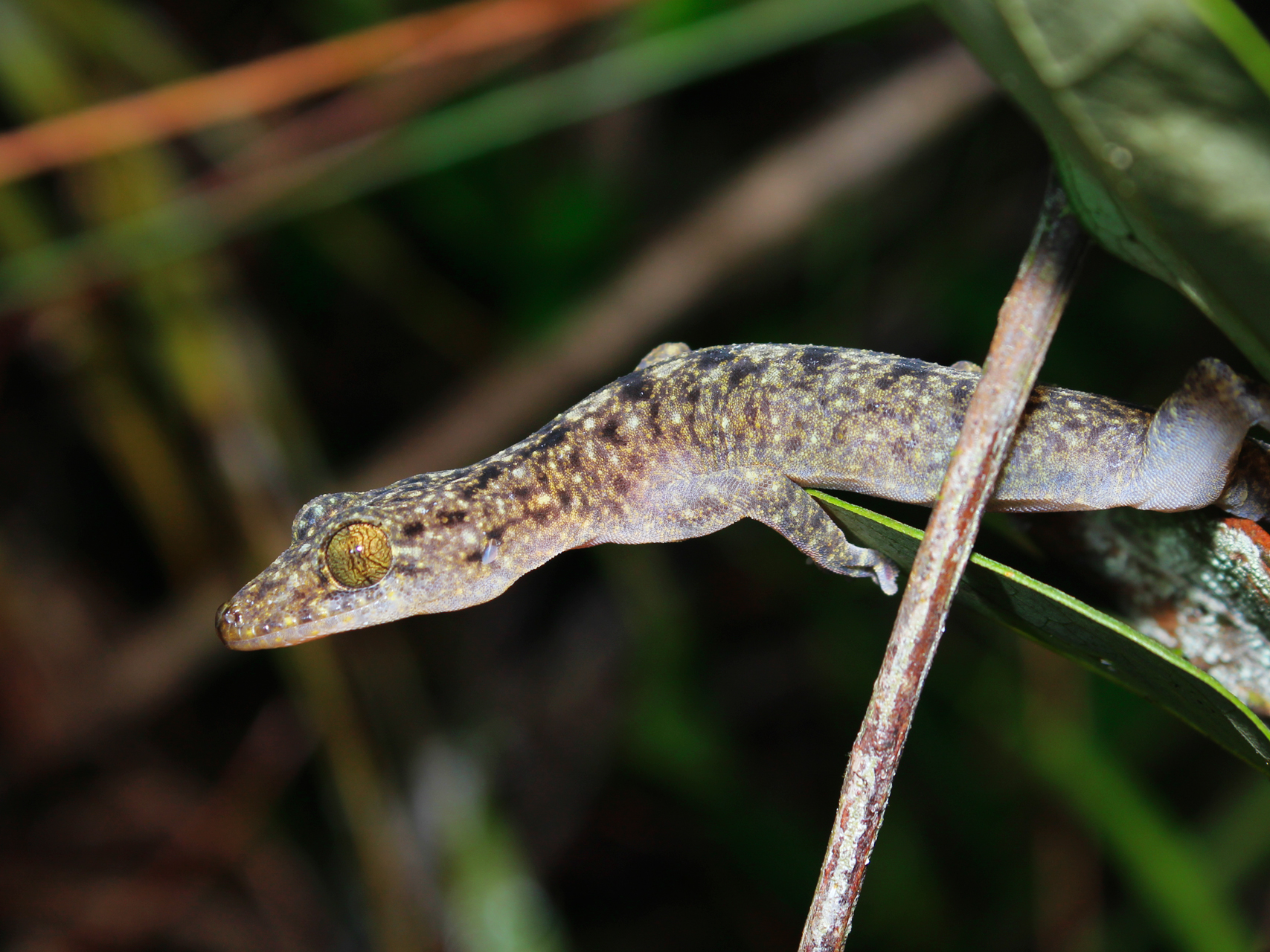Palawan Gecko
Palawan Gecko or Palawan Narrow-disked Gecko (Gekko palawanensis) is a medium size gecko endemic to Palawan. Their favored habitats include forested areas with large rock piles or outcroppings, rocky escarpments or walls, tree hallows, and old hollowed logs on the forest floor. They spend a lot of time outside in the evening, and will only retreat to ground hides during the day.
It shares the same type of habitat with the Palawan Bent-toed Gecko, but unlike its slightly bigger cousin who prefers ambush hunting, this Gekko is more of a stalk and pounce hunter. We were lucky to observe them hunting a few times while camping in the mountain at night. It's fun to watch as they slowly stalk moths and other insects attracted to our camp light, then leaping the last several inches to make the snag.
This species prefers heavily forested habitats to second growths in urban areas. Lowland habitats are degrading in Palawan, and the Palawan Gecko has been categorized as "Near Threatened" (NT) by the International Union for Conservation of Nature (IUCN).












